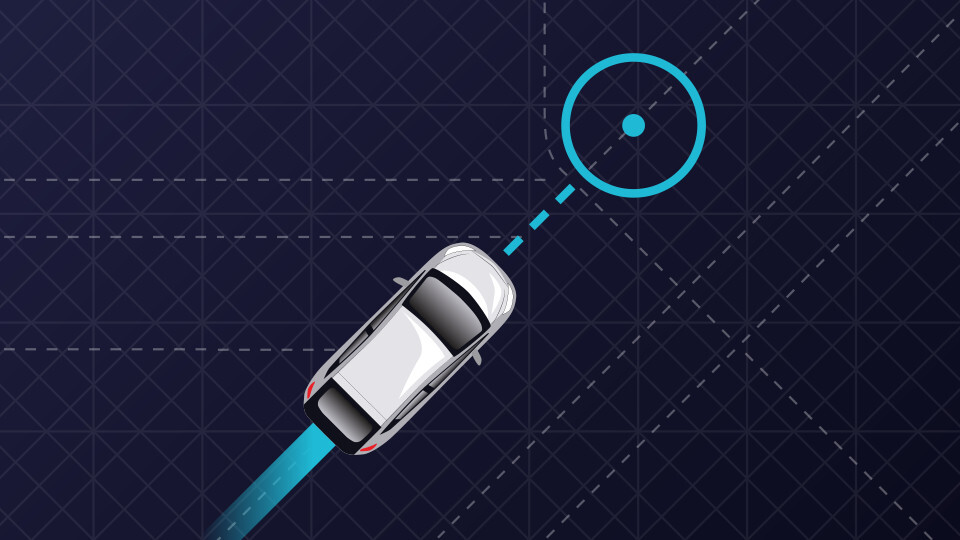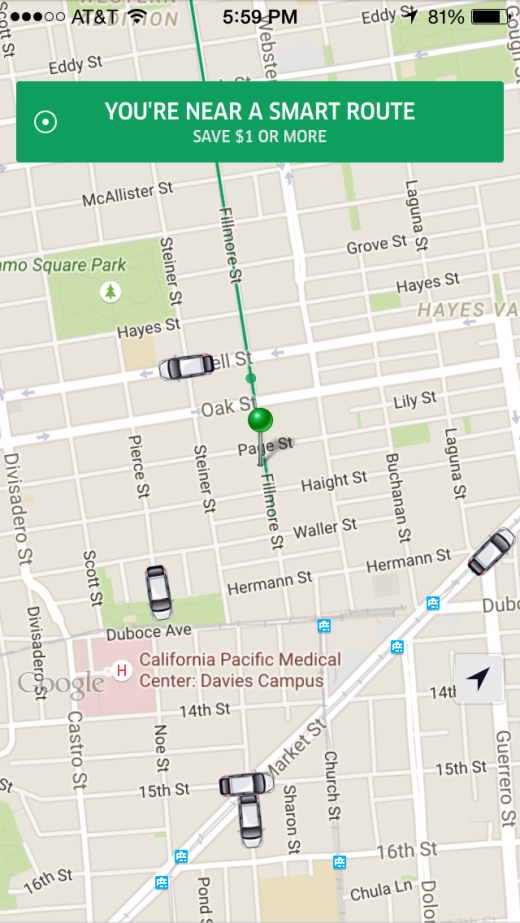
In an effort to create an efficient stream of passengers for its fleet of drivers, Uber is testing a “Smart Routes” program along large thoroughfares in San Francisco to encourage potential riders in the area to gravitate towards high-traffic pick-up spots.
The feature, which was first reported by TechCrunch, works much in the way that Lyft’s experimental HotSpots do: Users drop a pin to the Smart Route and meet the driver on that street. In exchange, Uber will provide a $1 discount to the passenger’s fare.
Uber confirmed the Smart Routes program in a statement:
We have begun testing a new feature to streamline the uberPOOL experience for both riders and drivers. This experimental feature, called ‘Smart Routes’, aims to simplify pick-ups by encouraging riders to request a ride along specific routes in San Francisco. Smart Routes is part of our ongoing efforts to increase the efficiency of driver-partners’ time spent on the road while helping riders save time and money.
While Lyft has boasted more than 100 HotSpots in the San Francisco area alone, Smart Routes are currently running in two areas of San Francisco: Fillmore Street between Haight and Bay street, and Valencia Street between 15th and 26th street.
San Francisco locals will recognize those two routes as cutting North of San Francisco between the trendy neighborhoods of Lower Haight and the Marina District, and a route that goes through the neighborhood du jour (and land of rising housing prices) the Mission.

Smart Routes is currently not available outside of San Francisco.
Uber and Lyft have been eagerly discounting fares to encourage ride sharing initiatives, and the Smart Routes/HotSpots experimentation is no different. In addition to its new Smart Routes efforts, Uber continues to offer a capped $7 rate for passengers who ride within certain borders of San Francisco.
Last week, Lyft upped the ante by providing a promotional period of capped Lyft Line rides in certain borders, with a price as low as $6. This seems to have supplanted HotSpots, which were in these areas to begin with.
Of course, it seems the real winners here are the riders, who are accustomed to low-cost ride shares. This means that Uber and Lyft must find ways to make each ride as efficient as possible, to keep drivers happy while also lining pockets.
Whichever company figures out how to keep its costs low, and its fares even lower, will gain the edge.
➤ Uber Tests Bus-Style Discounted “Smart Routes” [TechCrunch]
Get the TNW newsletter
Get the most important tech news in your inbox each week.